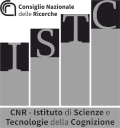Deictic Communication - A Multidisciplinary Training - DCOMM
Deictic communication is fundamental to understanding communication in both typical and atypical populations, and forms the key connection between language and objects/locations in the world. It is therefore critical to understanding human-human interaction, and human-system interaction in a range of technology applications – from mobile phones to intelligent robotics – and to the enhancement of clinical and educational interventions with typical and atypical populations. This ETN will train the next generation of scientists in the full range of multidisciplinary and cross-sectorial methods necessary to make significant progress in understanding deictic communication, with direct synergies between basic research and application. Training is structured around two interdisciplinary research themes – Understanding Deictic Communication and Deictic Communication in Application – both involving extensive and systematic co-supervision and collaboration across sites with key interplay between academic and non-academic beneficiaries and partners. In turn we expect that a range of applications will be enhanced with increased usability, with associated societal and economic benefit. The training of the cohort of ESR fellows is based on innovative PhD training approaches, providing not only training in interdisciplinary methods, but also employing peer-assisted methods and the latest in educational innovation. This will produce a cohort of highly skilled researchers who will be highly employable given the potential contribution they will make to future research and innovation in the public and private sectors.
Project Description – This project will focus on deictic communication in sign languages – languages where action is privileged, but also provides key grammatical functions. Drawing on previous work on Sign Languages (SL) and Spoken-Vocal Languages (VL), and on new evidence on the development of deictic gesture and words for demonstrative versus person reference, the project will explore typological, modality-specific features affecting deixis and anaphora in SL. Deictic-anaphoric reference is produced in SL via complex manual and non-manual units, which exhibit highly iconic features and are marked by specific eye-gaze patterns which distinguish them from standard signs. Signed data will be analysed also referring to co-speech deictic gestures and to other deictic devices (e.g. demonstratives), in order to analyze bimodal bilingual (spoken/signed language) patterns of both adults and children.

